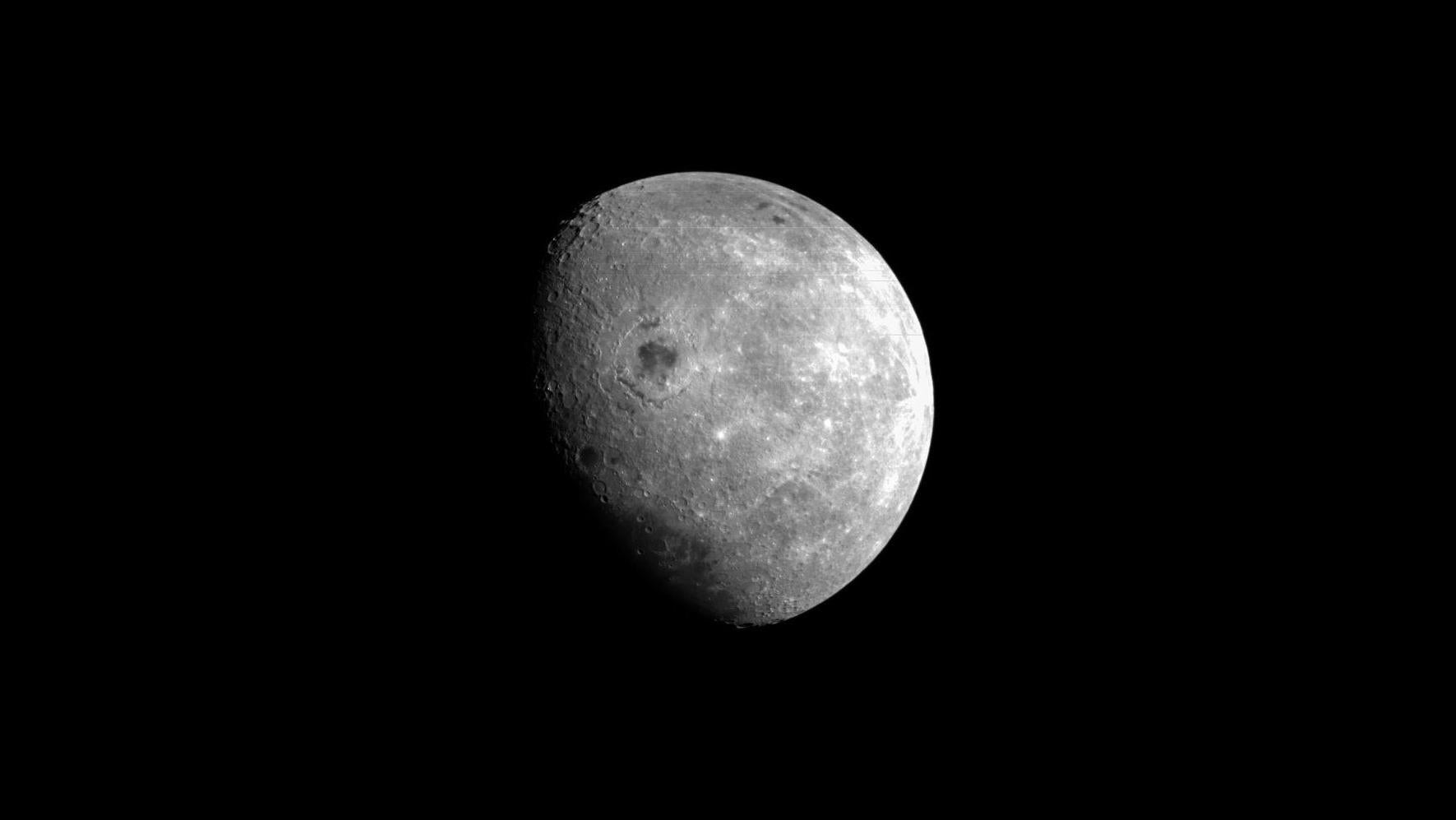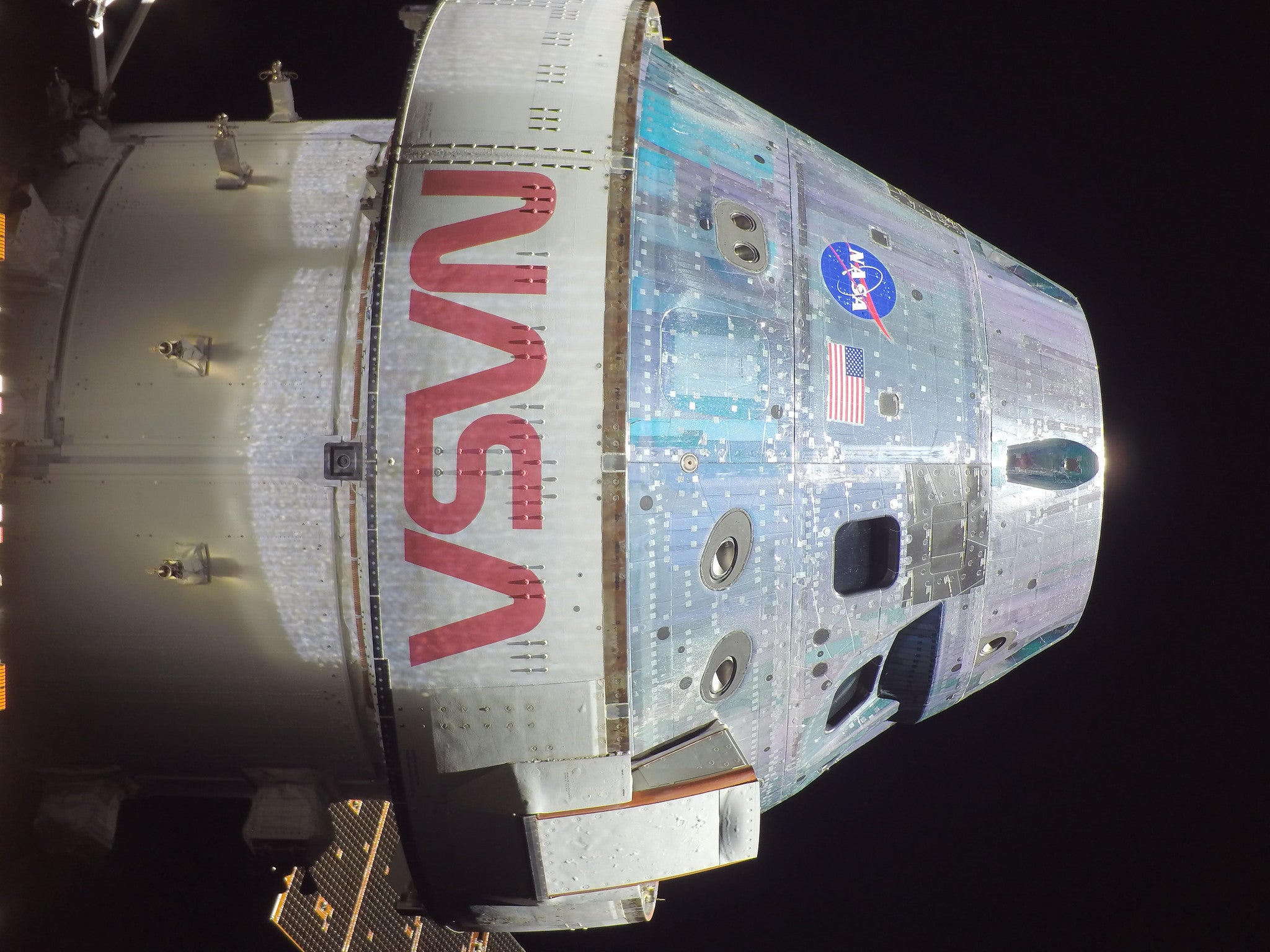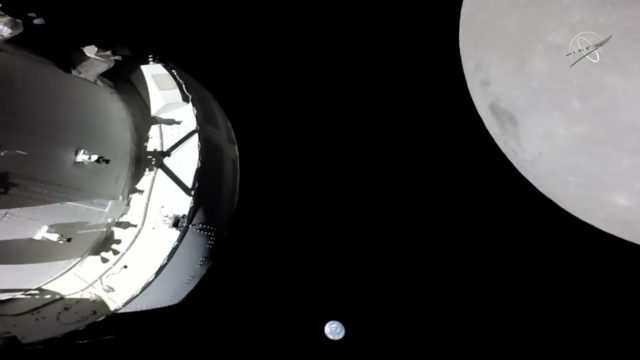The Artemis 1 mission continues to unfold as planned, with the uncrewed Orion capsule successfully performing a critical course correction manoeuvre Monday morning. NASA’s capsule came to within 129 km of the lunar surface during the flyby, in what will be Orion’s closest approach.
The uncrewed Artemis 1 capsule, launched on November 16, entered into the lunar sphere of influence at 2:09 p.m. (all times Eastern) on Sunday and is now in the process of reaching its ultimate destination: distant retrograde orbit. Orion needs to perform two powered burns to enter DRO, the first of happened Monday morning, according to a NASA blog post.

Thrusters on the orbital manoeuvring system engine went into action at 7:44 a.m., firing for two minutes and 20 seconds. Orion was 528 kilometres above the Moon and moving 8,084 km per hour at the time. The capsule passed just 130 km above the Moon at 7:57 a.m., marking the closest lunar approach of the Artemis 1 mission. Orion is now moving away from the Moon at speeds reaching 8,211 km/hr.
Distant retrograde orbit is known as such because spacecraft in this orbit travel very far from the Moon at their most distant points and because they travel around the Moon opposite to the direction the Moon orbits Earth. This orbit is “highly stable” and “allows a spacecraft to reduce fuel consumption and remain in position while travelling around the Moon,” according to NASA.

Ground stations on Earth temporarily lost contact with Orion starting at 7:26 a.m. today as the spacecraft passed behind the Moon. NASA’s Deep Space Network re-established contact 34 minutes later, NASA said. The space agency is providing a real-time tracker to follow Orion’s progress as it happens.
We calculate the nominal path for each maneuver. When we have signal, we use that information to plot @NASA_Orion‘s position. When we have loss of signal, we continue plotting Orion’s location along that nominal path.
— NASA (@NASA) November 21, 2022
The second of the two course correction manoeuvres is scheduled for Friday, November 25, at 4:52 p.m, with the orbital manoeuvring system engine on the European Service Module again kicking in. This manoeuvre will place Orion into the distant retrograde orbit, where it will stay for about a week while NASA conducts further tests of the system. The spacecraft will travel 40,000 miles (64,000 km) past the Moon before it heads back. Orion is supposed to depart DRO on December 1 and arrive back on Earth on December 11.
“Overall,” Artemis 1 has been “a very clean mission,” Jeff Radigan, flight director at NASA, told reporters during a briefing on Friday. The team worked its way through 13 anomalies, said Mike Sarafin, Artemis I mission manager, most of which are “relatively benign.” Sarafin added that Orion is “exceeding expectations.” Jim Geffre, Orion vehicle integration manager, said the spacecraft is collecting more power, exhibiting better heat rejection, and using less power than anticipated.
More on this story: What’s Next for the Orion Spacecraft as It Cruises Toward the Moon.
Artemis 1 is a demo mission in which NASA is evaluating its new Space Launch System rocket and the Orion spacecraft, the latter of which must still survive reentry through Earth’s atmosphere. A successful mission would set the stage for Artemis 2, in which a crew will attempt a similar trip to the Moon and back, and Artemis 3, which seeks to land a man and woman on the lunar surface later this decade.
More: Thrilling Photos of NASA’s SLS Megarocket Launch to the Moon
